‘Death corner’: How Camp Bowie’s 6-way intersection became Fort Worth’s most infamous
If you think that driving through Fort Worth’s “six-point” intersection of Camp Bowie Boulevard, West Seventh Street and University Drive can be confusing or intimidating, just consider what your parents or grandparents had to navigate.
This wonky and infamous intersection in what’s now the Cultural District was described as a “death corner” in a 1938 article in the Star-Telegram. Even back then, the junction was “one of the city’s worst traffic problems” (there were fewer ways to get from west Fort Worth to downtown back in those days). Cars smashed into one another. Pedestrians got run over.
It was ugly, in more ways than one.
In the decades since, the intersection’s design has been perhaps one of the most scrutinized in Fort Worth. Area colleges studied it (“blow it up and start again” was a popularly suggested fix). Proposals for overhauls came and went — from over/underpasses to lane reductions to building a roundabout with a fountain in the center.
By the 1980s, the confluence had earned the derisive nickname “Waiting Room,” because red lights took so long you’d wish for a magazine to read. Drivers approaching the intersection from six directions could go 24 different ways.
We dug through the Star-Telegram’s archives to find these photos that show just how drastically this intersection has changed — from a nightmarish “jungle” of traffic signals to what’s today a much more attractive gateway into the Cultural District, surrounded by some of Fort Worth’s hottest new developments.
Here is one of the earliest photos we’ve found, from 1938.
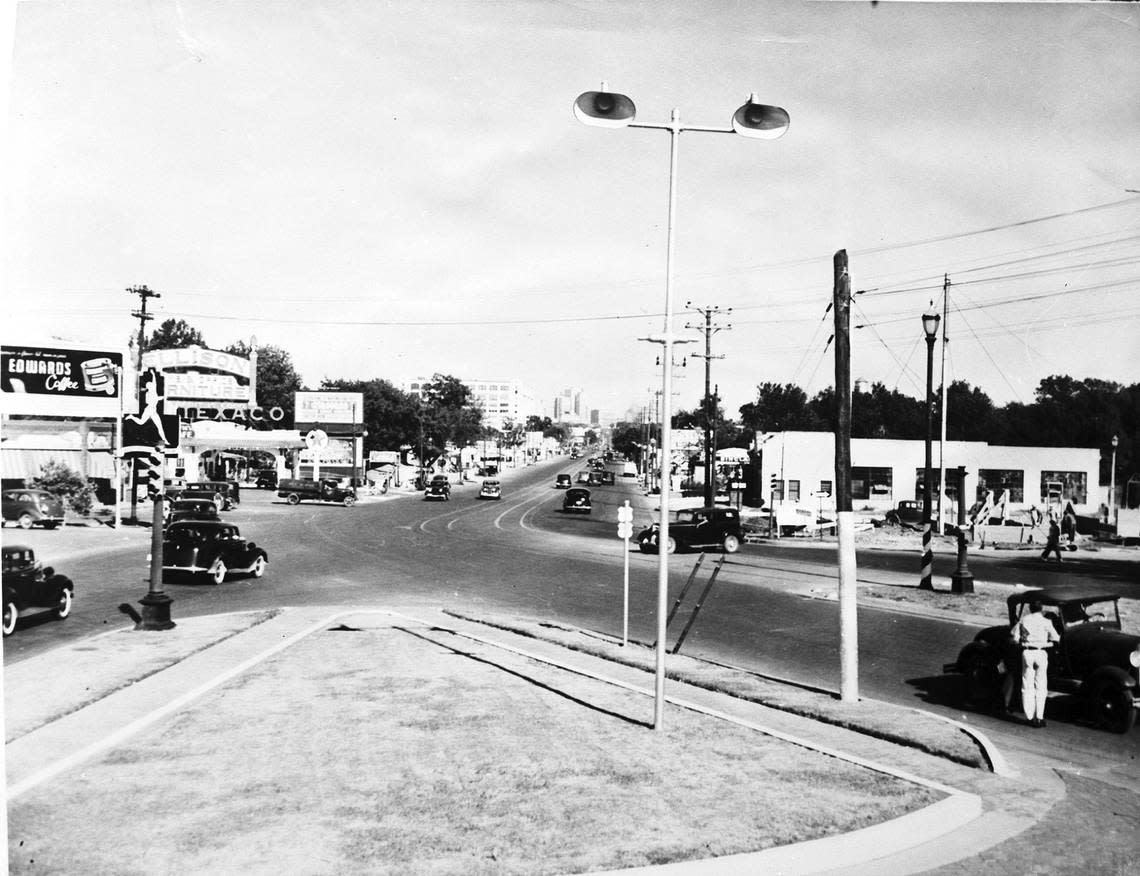
This accompanied a newspaper story about this “danger zone,” part of a Star-Telegram series urging the city to make streets safer. At the time, University Drive to the north of West Seventh was called Burleson Street.
This aerial photo from 1939 gives a different view — note how today’s “entertainment district” was nothing but a smattering of little homes, empty lots, and probably a chicken coop or two.
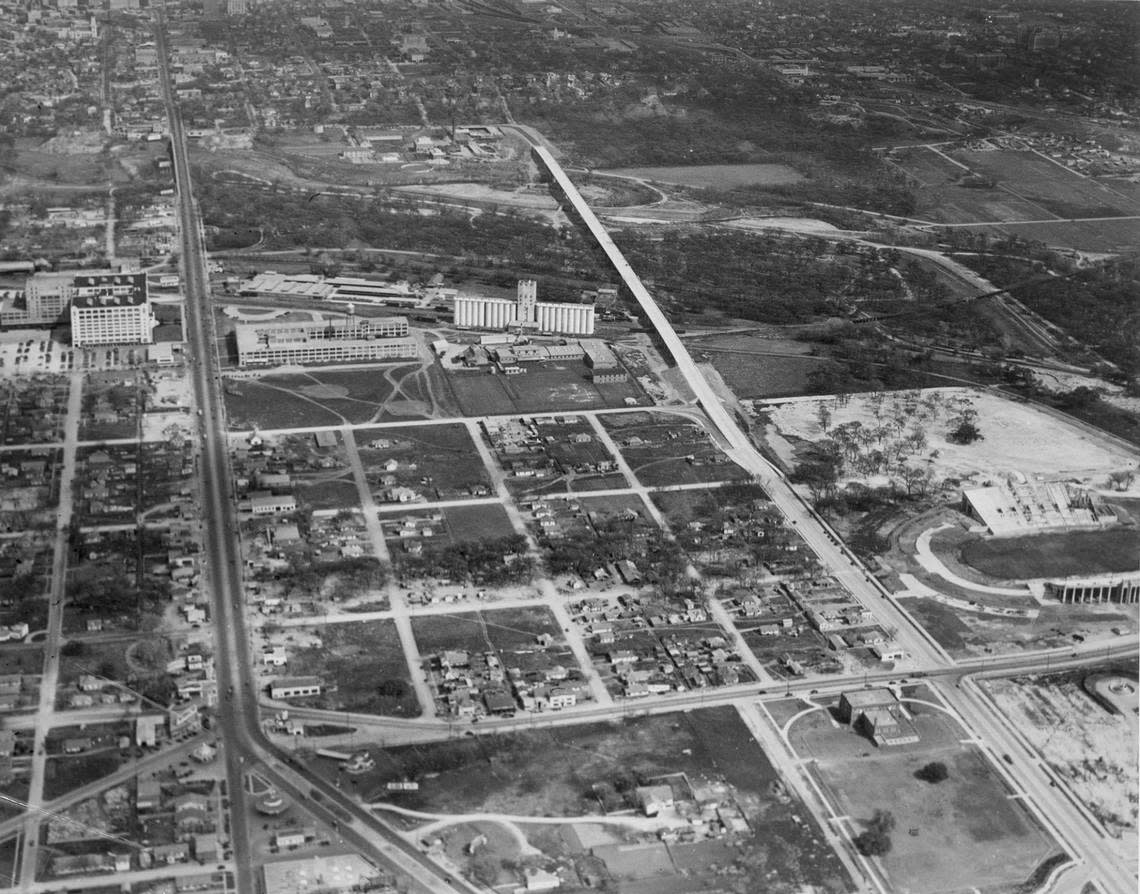
By the 1950s, traffic on Fort Worth’s west side was becoming a real headache. Until work began on an East-West Expressway (which would later become Interstate 30 to the west of downtown), West Seventh Street was one of the major routes into the city center.
A Star-Telegram reporter in 1951 lamented, “Will an Arlington Heights motorist ever be able to get into an auto and drive downtown at a speed of 30 to 45 miles an hour ...?”
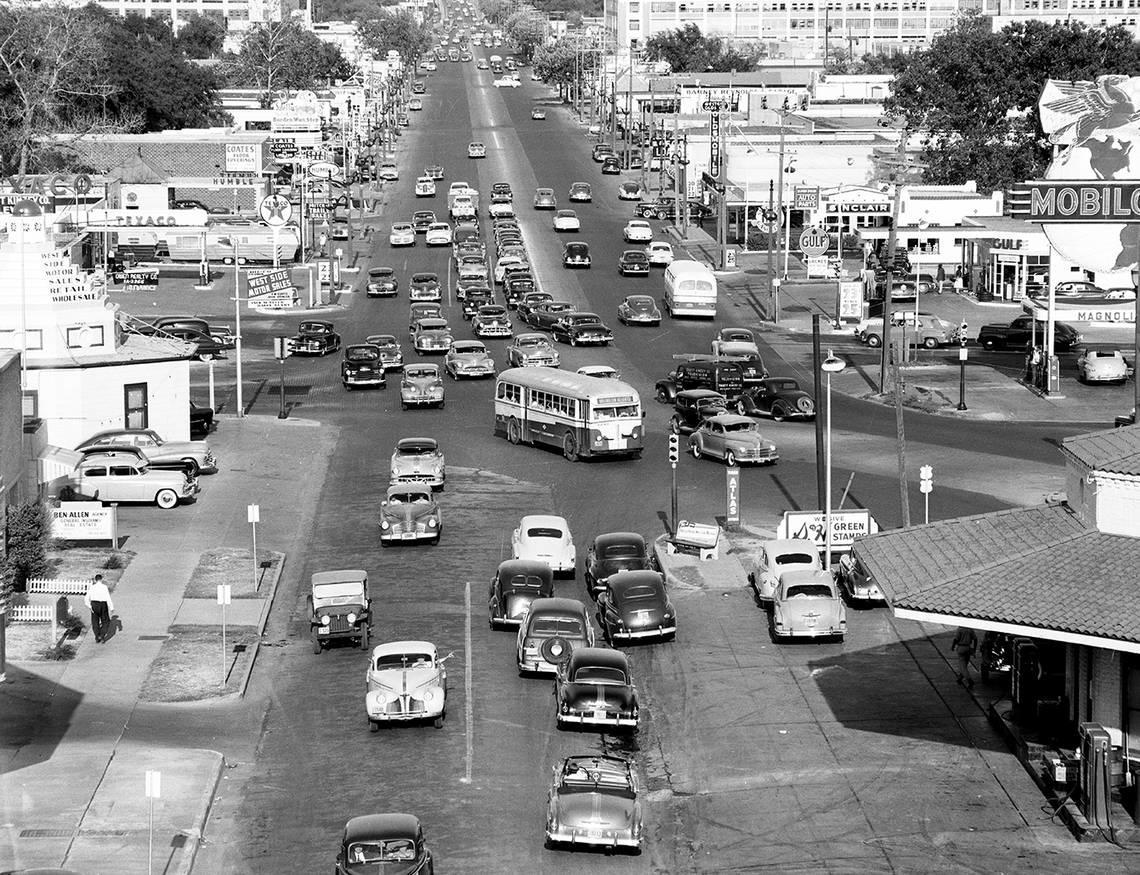
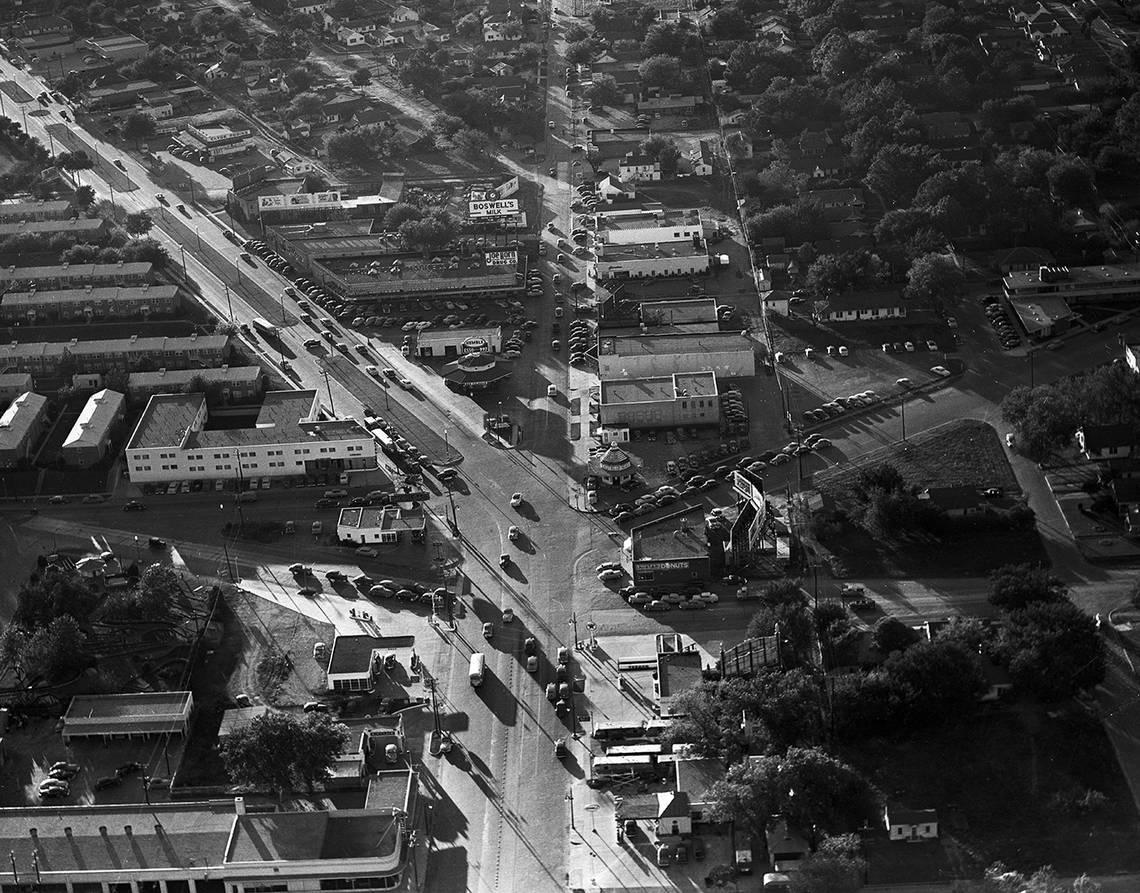
Jump ahead to the 1980s. The state proposed a $1 million plan to reduce the number of lanes entering the intersection, which would shave 45 seconds of 4-minute waits at red lights. A casualty of said proposal would have been Fred Grimes’ full-service Exxon station that had been filling tanks at the point on Camp Bowie and West Seventh for more than a generation.
Suffice to say, the normally cheerful Mr. Grimes was not happy.
“I have been here 25 or 30 years and all of a sudden it’s, ‘Sorry, you have to go.’ And for what?” he told a Star-Telegram reporter in 1985. “What’s everybody so upset about waiting a few minutes?”
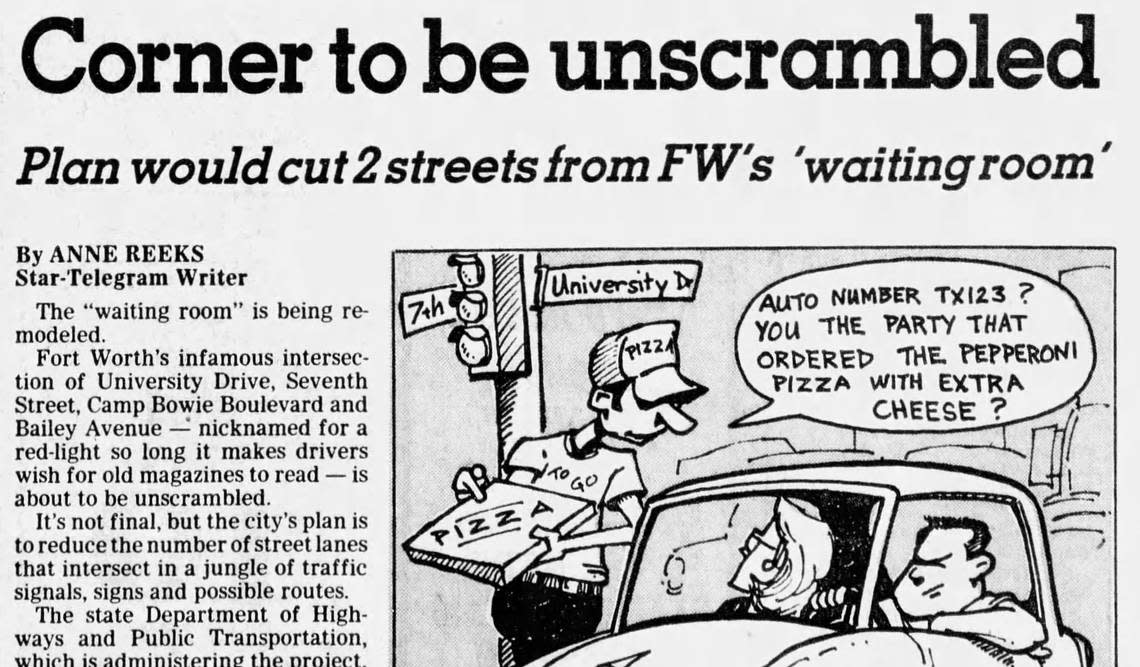
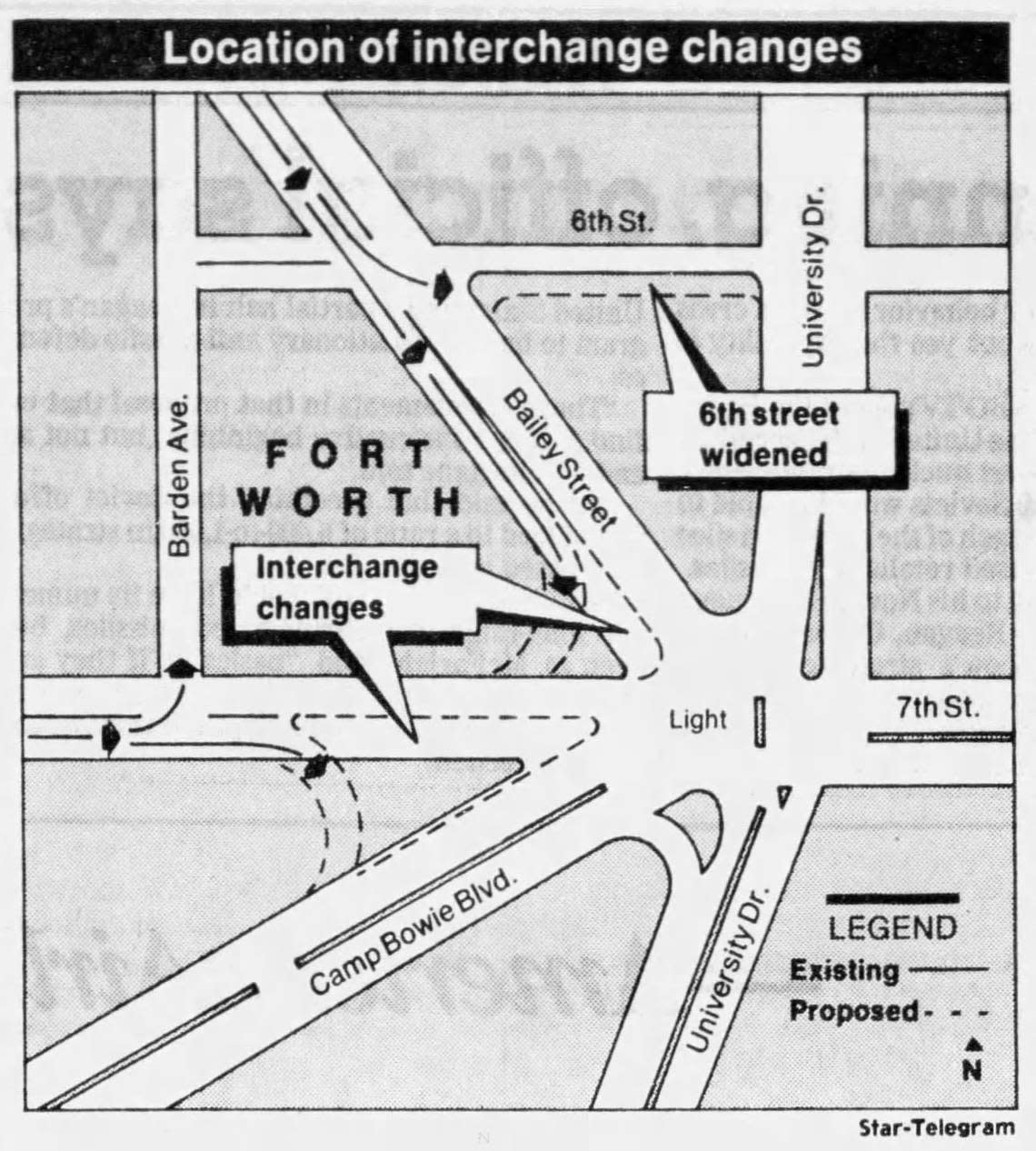
Lucky for him, the station would live to see another day.
But by 1988, Grimes had lost the lease. The station became a Texaco, which you can see in this 2000 photo:
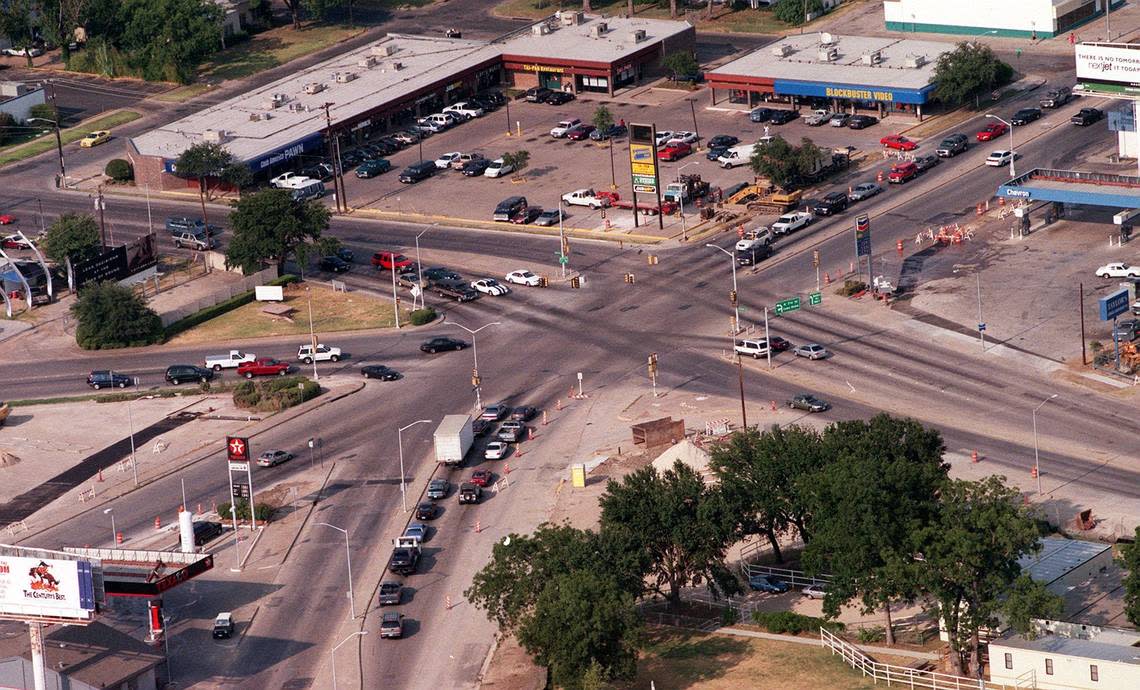
In the early 2000s, the city proposed a big plan to construct a roundabout that could be “an attractive gateway to the Cultural District and a magnet for development,” the Star-Telegram reported. “The project has been plagued, however, by infighting over the best design.”
And a good number of folks just didn’t like the idea of a traffic circle.
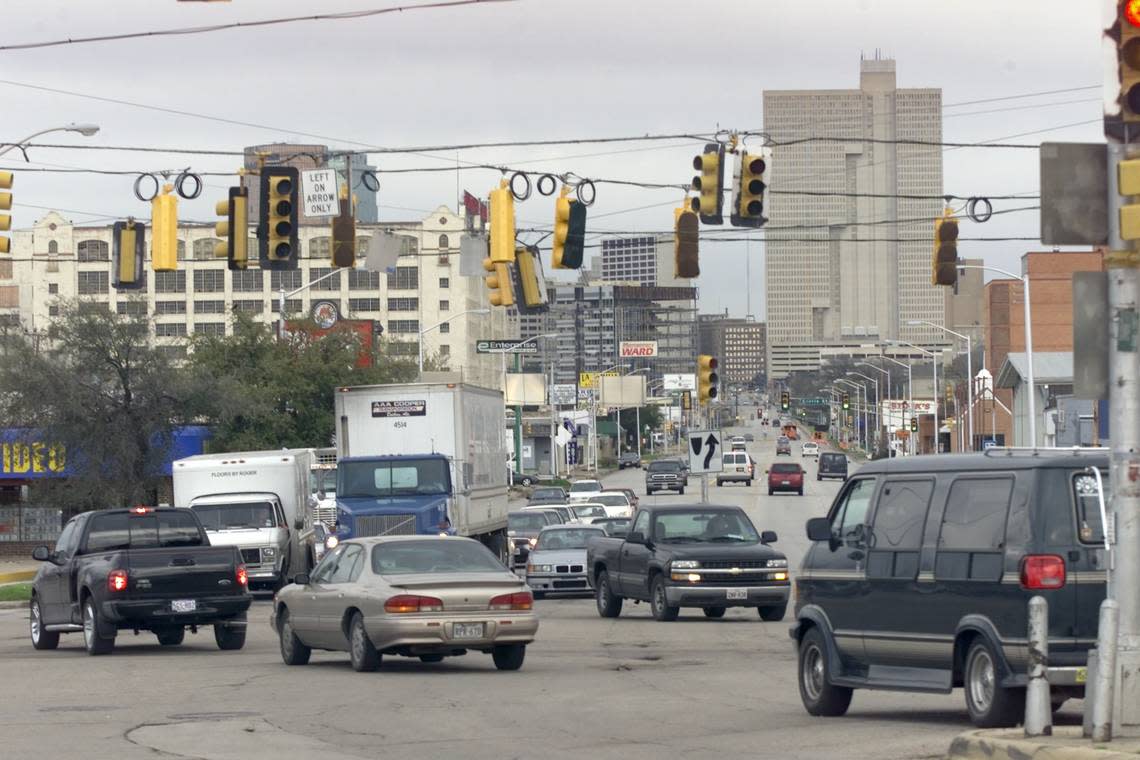
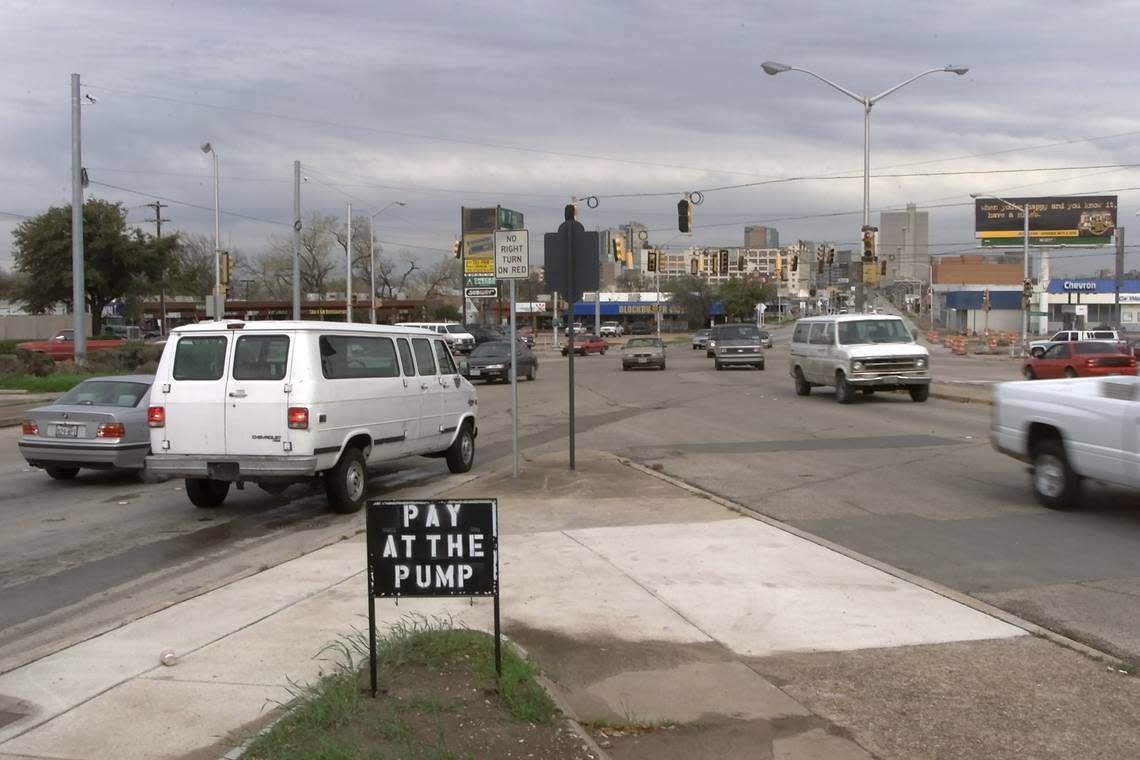
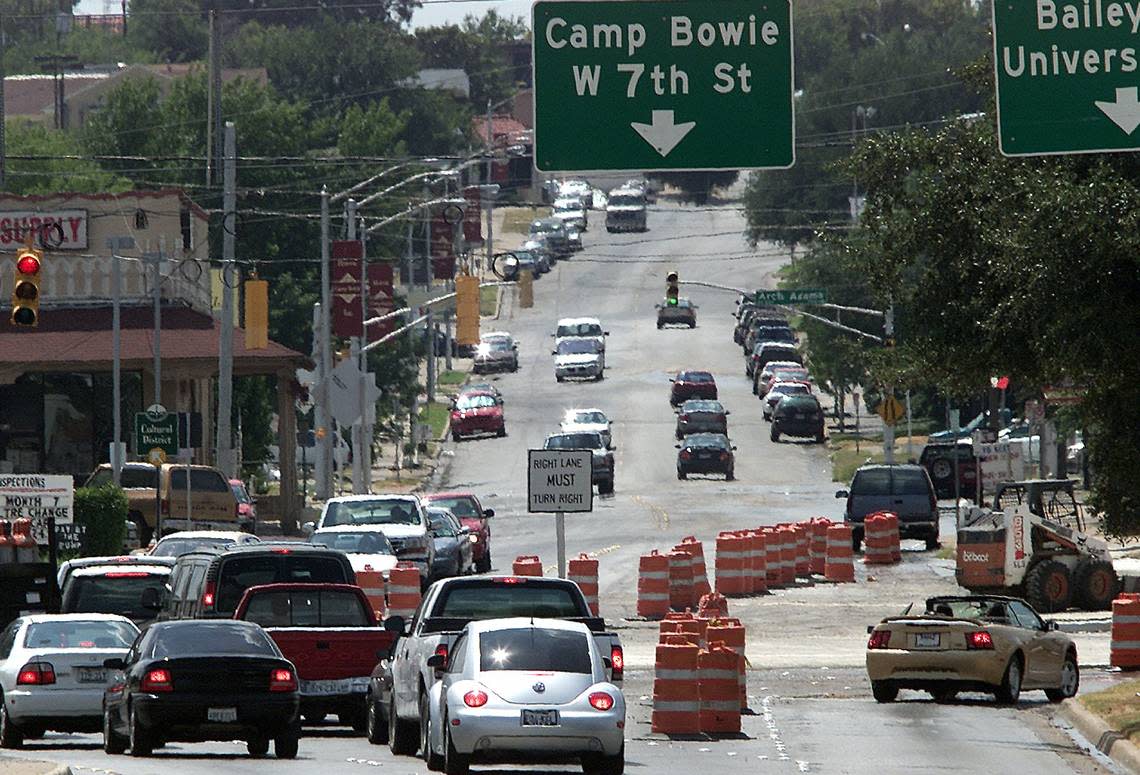
Local philanthropist Anne W. Marion offered up to $25 million to build the roundabout with a fountain on a center island. Over several months, city officials hired consultants, held meetings and visited other communities with roundabouts. But hours before a vote to pick a design, Marion pulled back her planned donation because of tough economic times.
By early 2002, a yearlong project to give the intersection a facelift was wrapping up. The circular intersection was made more oval shaped and had tree-lined medians, red-brick accents and additional turn lanes. New traffic signals were timed to help with flow.
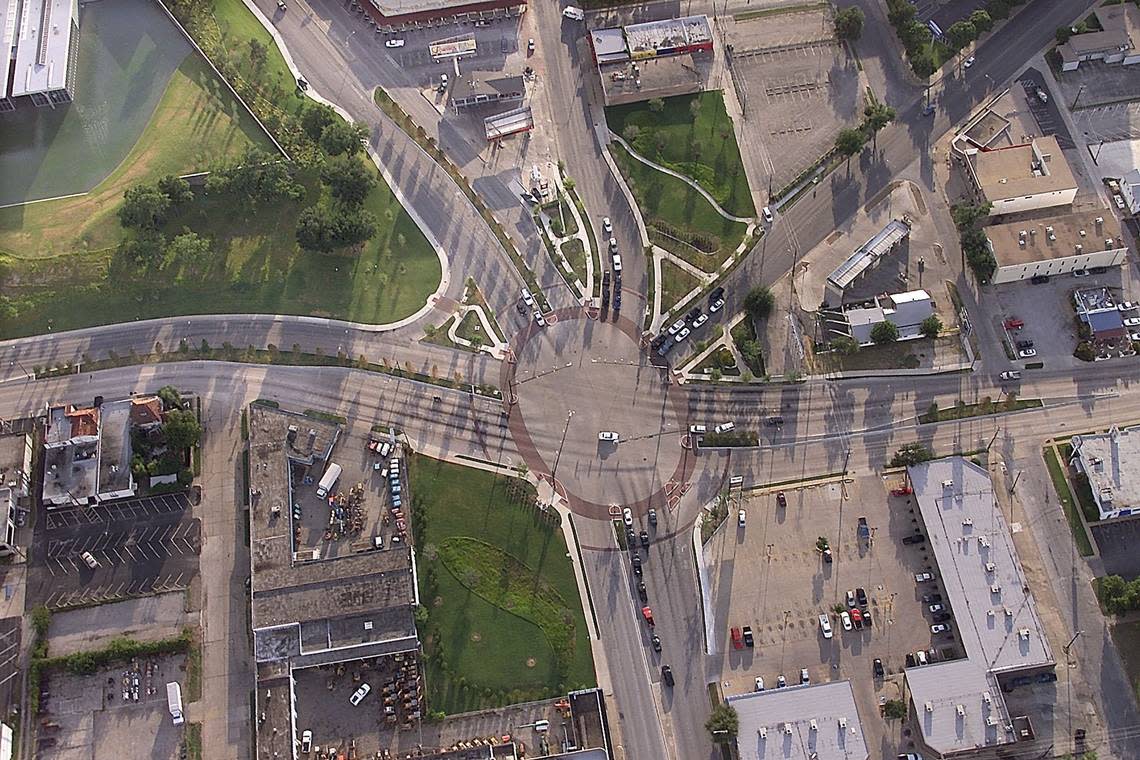
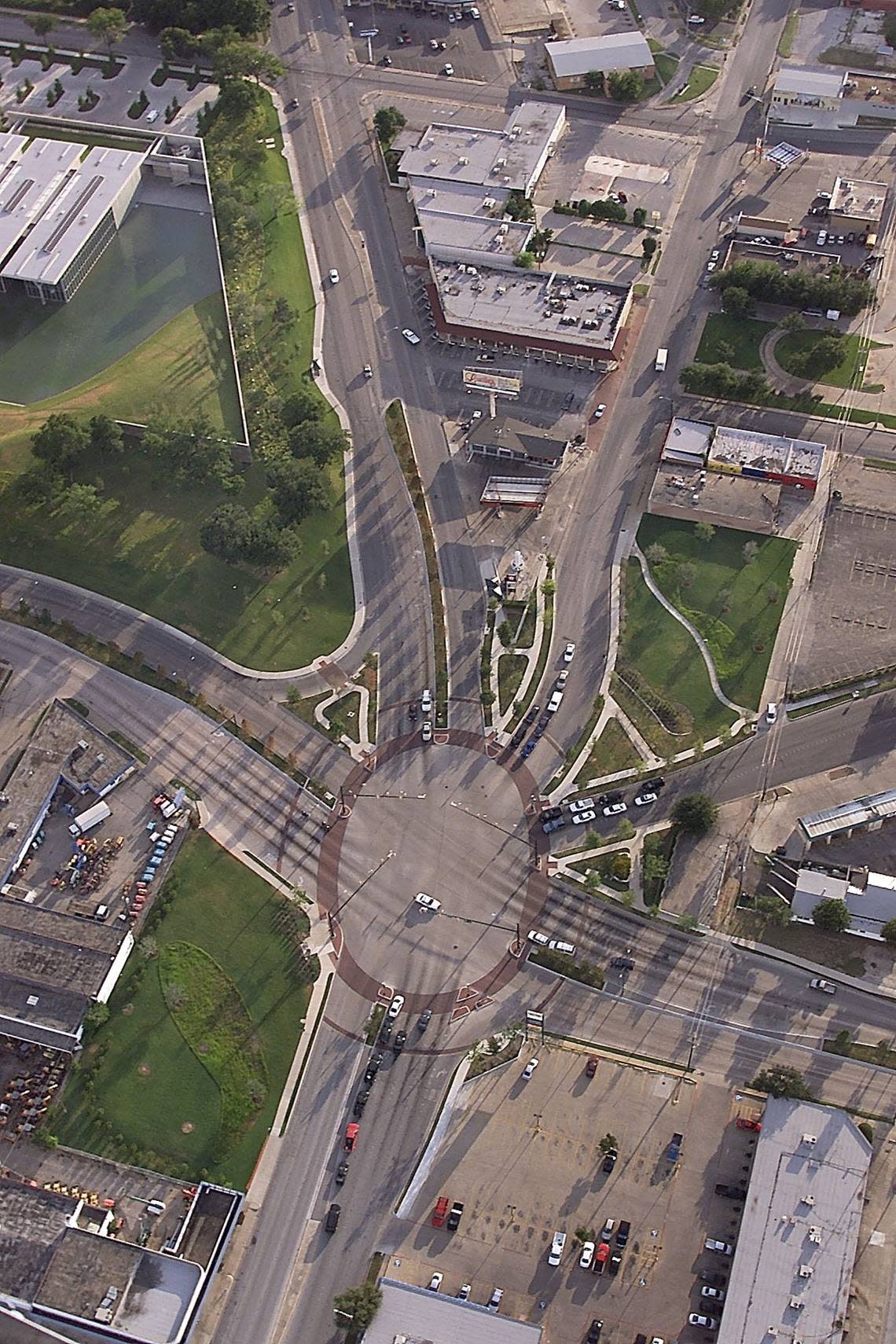
In 2007, construction was beginning on Museum Place, a $200 million, 11-acre mixed use development on the west side of the intersection. It was, by this time, truly the end for road for Mr. Grimes’ old gas station on West Seventh.
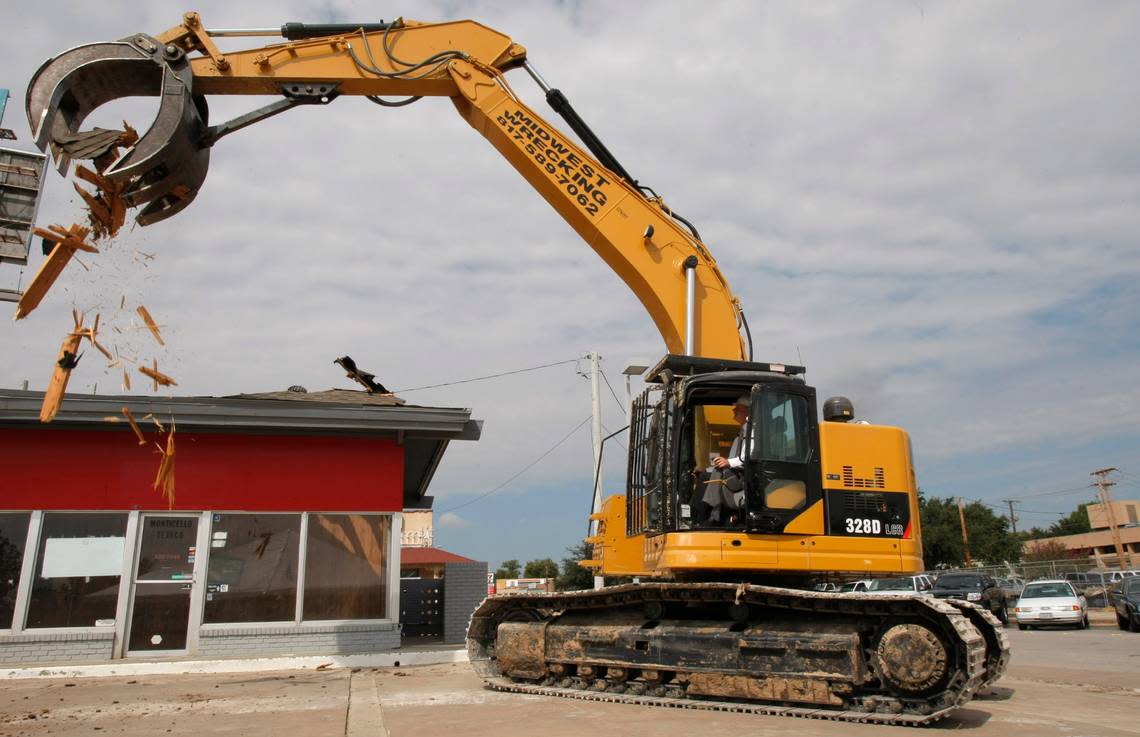
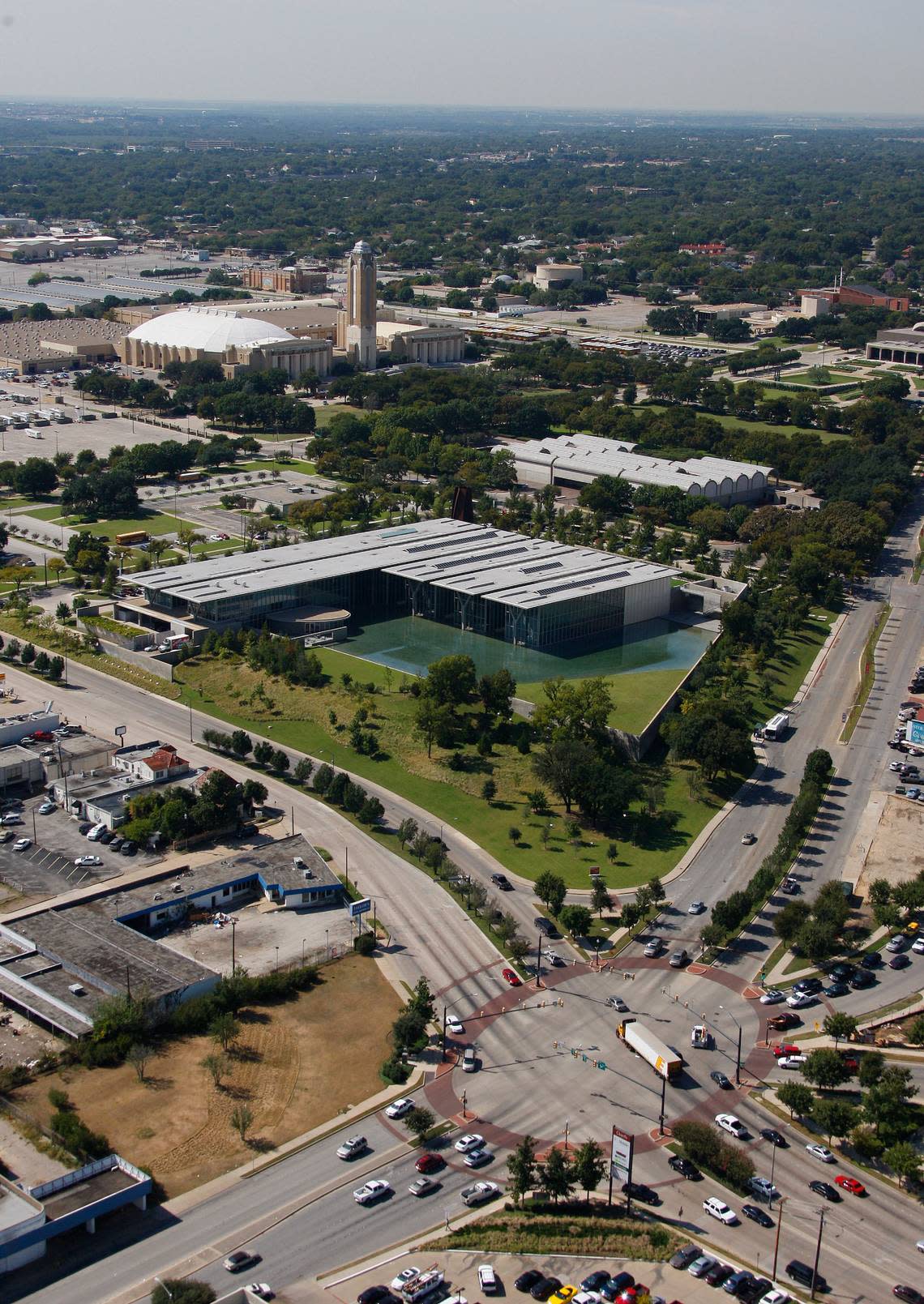
More development would follow, including Crockett Row (recently rebranded as Artisan Circle), the nearby luxury Crescent Fort Worth Hotel and additional mixed-use midrise towers now under construction.
Today, the six-point intersection is clearly a less of a harrowing experience for drivers than it had been for most of its existence. Next time you drive through this former “death corner,” think about it’s notorious past and be grateful it’s just that — the past.
Today's top stories:
→ Baby gorilla born in rare C-section at Fort Worth Zoo
→ Pentagon may cut orders for Lockheed Martin F-35 fighter jets
→ Tarrant County Jail inmate dies at Fort Worth hospital
🚨Get free alerts when news breaks.
This story includes reporting from the Star-Telegram archives.
MORE: Check out more Star-Telegram archive photos in our collection here, including:
Long-lost restaurants of Fort Worth
